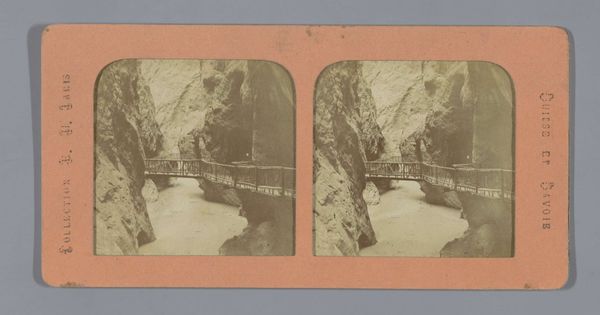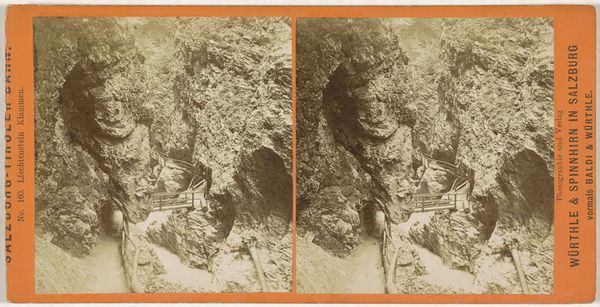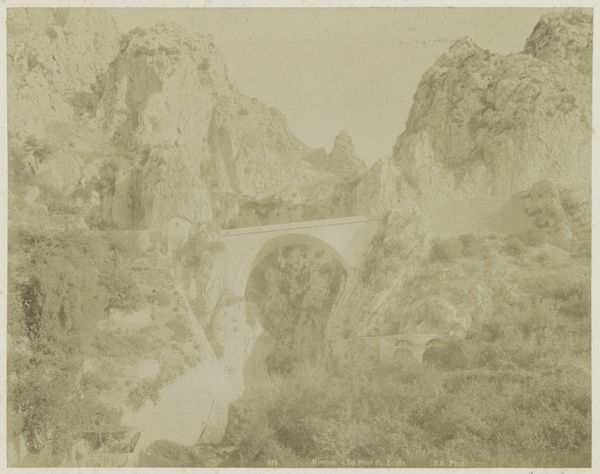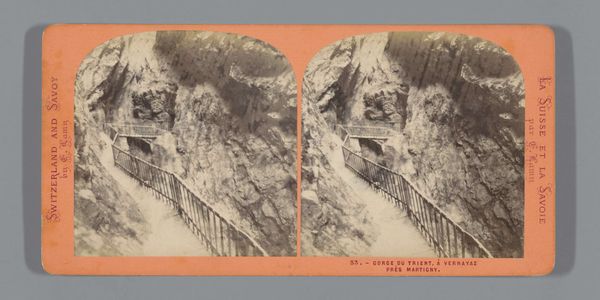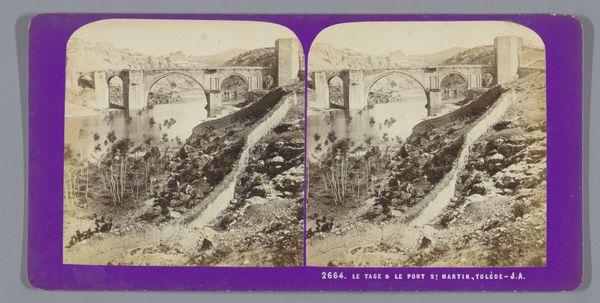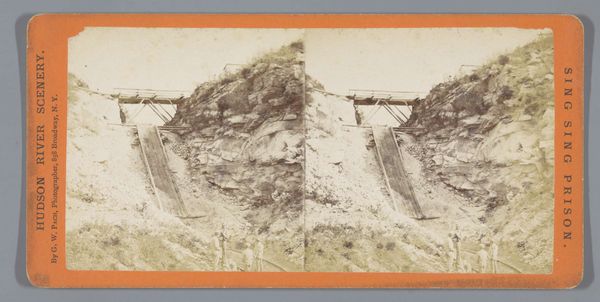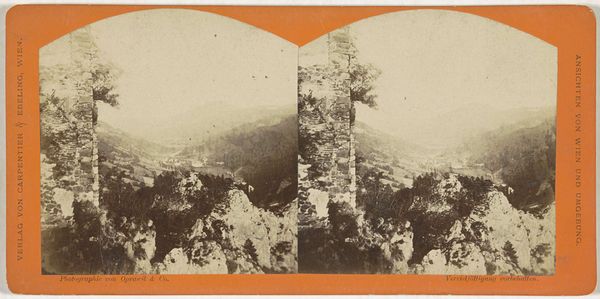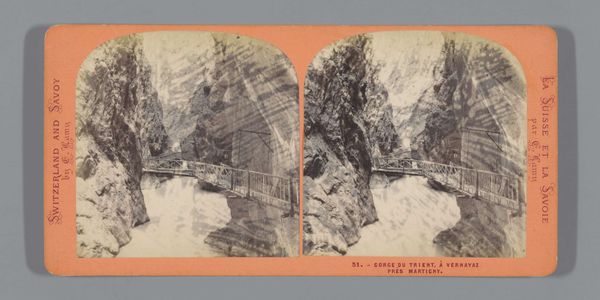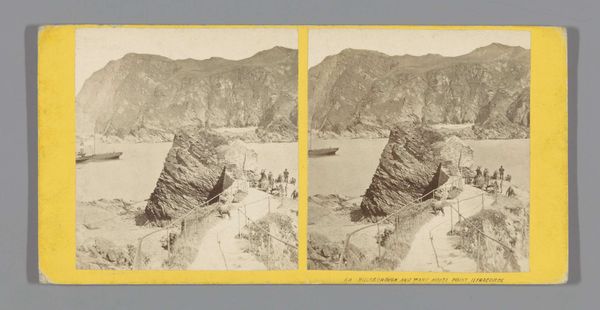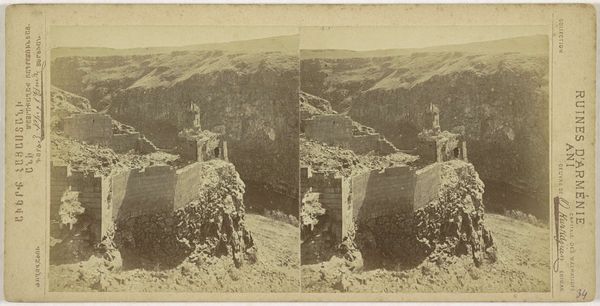
print, photography
# print
#
landscape
#
photography
#
mountain
Dimensions: height 86 mm, width 177 mm
Copyright: Rijks Museum: Open Domain
Curator: I find myself captivated by this rather stark photograph. It's titled "Spoortunnel in de Weinzettelwand boven de Adlitzgraben," and dates sometime between 1868 and 1890, attributed to Oprawil & Co. Editor: The desaturated tones and almost overwhelming natural setting create a feeling of austerity, or maybe determined defiance, what do you think? Curator: Definitely a strong, stoic quality. The mountain looming in the background – Weinzettelwand – its texture almost palpable, evokes a sense of timeless power. It's punctuated, though, by those very man-made arches. That is, the spoortunnel – built directly into the rockface. It's striking how this early industrial development is juxtaposed with raw nature. Editor: Those arches carry a heavy weight, quite literally. They represent not just an engineering feat but, visually, that tension of human ambition against an environment that frankly dwarfs our every effort. You notice those repeating forms and their shadows create their own language and, when seen together like this, can we call it almost a "code"? Curator: I can see that, those arched tunnels carry symbolic weight, as transitional spaces, not just spatially, but conceptually. Think about what it took to create infrastructure through that kind of topography in that period! The project is one born of both necessity and perhaps national ambition; constructing modernity even at the very border between civilisation and what was viewed as the imposing, often hostile, "wilderness." It shifts the power dynamics that can speak to race and class at the time, too. Who benefitted from easier transport and travel and whose lives were further impacted in negative ways through construction of those railroads? Editor: I suppose a modern audience brings its own assumptions when it views images of development. Yet in those small framed openings there is more than architecture – they contain the spirit of ingenuity against a severe landscape. Curator: Precisely, but our awareness of context also challenges what the symbol might mean to a modern observer. I feel this image is very compelling precisely because it opens itself to so many contemporary dialogues, about power, about change. Editor: It's an austere and powerful piece, reminding us how much a single image can symbolize both grand visions and profound change.
Comments
No comments
Be the first to comment and join the conversation on the ultimate creative platform.

